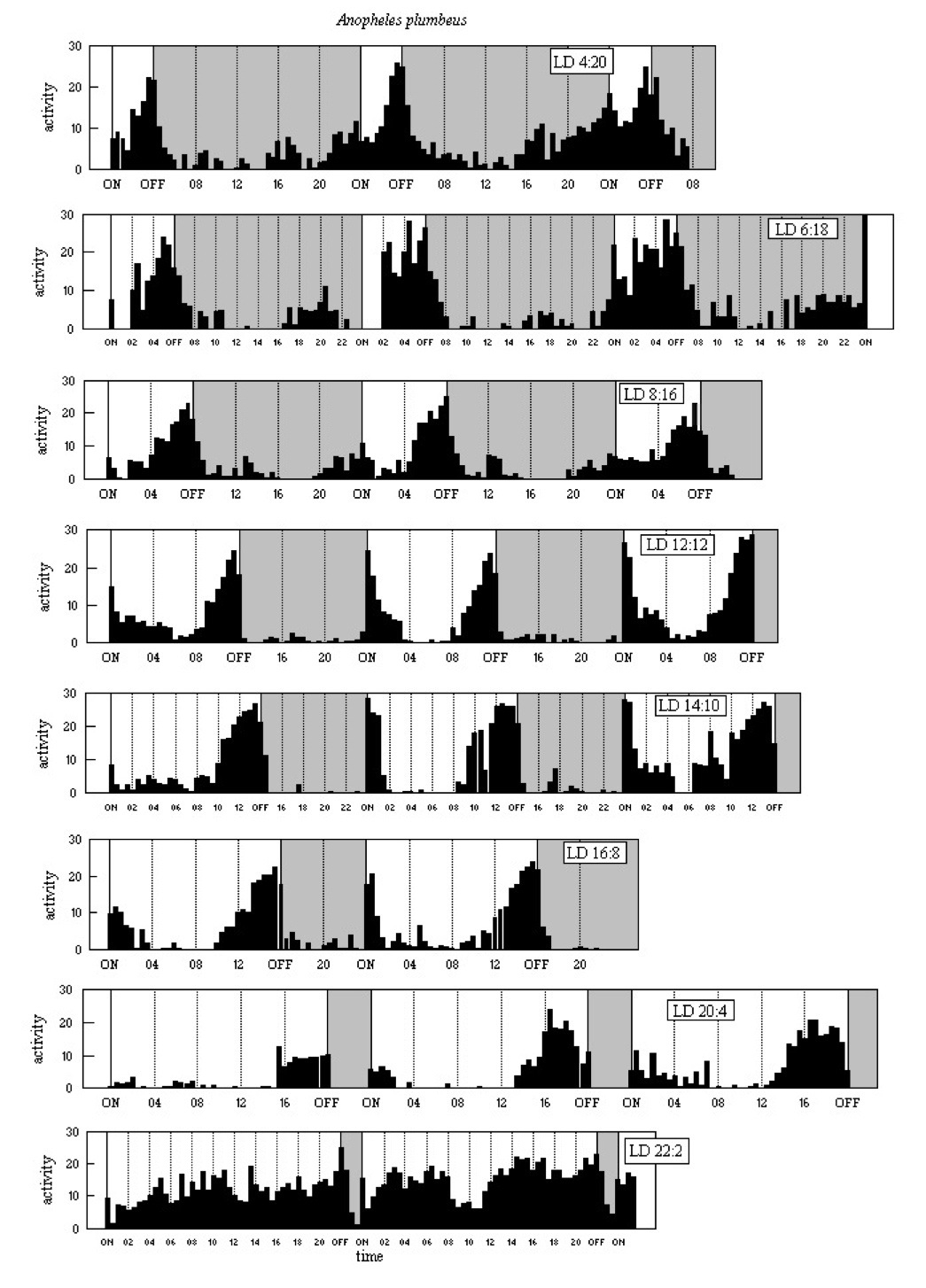Biological Clocks in Mosquitoes
|
 A species of the western Palaearctic, type locality
Northern Ireland, which breeds in tree-holes. It is found from the
northern limits of oak (around 58°N) south to Algeria (around 35°N),
and eastwards from Britain to Iran (Marshall, 1938; Stone et al.,
1959). It is a univoltine species, overwintering in the larval stage,
and with the adults being found in Britain from May to September, when
the females have been reported as frequently biting in the daytime as
well as in the evening (Covell & Shute, 1954).
A species of the western Palaearctic, type locality
Northern Ireland, which breeds in tree-holes. It is found from the
northern limits of oak (around 58°N) south to Algeria (around 35°N),
and eastwards from Britain to Iran (Marshall, 1938; Stone et al.,
1959). It is a univoltine species, overwintering in the larval stage,
and with the adults being found in Britain from May to September, when
the females have been reported as frequently biting in the daytime as
well as in the evening (Covell & Shute, 1954).
Experimental material
Adult females were readily trapped attacking man at Wimbledon Common,
Surrey, England (51°25'N) between 1900h and 2000h BST on 3 September
1968 (sunrise 0611h and sunset 1948h BST, daylength 13h37m) and these
were used in experiments from 4 September. Further females were trapped
at the same location on 9 September 1968, and these were used in
experiments from 10 September. Field activity was primarily during the
hour before sunset. Recordings were made with light-off at 2000h BST.
Experimental regimes
LD 4:20, nine females, recorded for days three to five.
LD 6:18, two females, recorded for days two to five.
LD 8:16, six females, recorded for days three to five.
LD 12:12, nine females, recorded for days two to four.
LD 14:10, two females, recorded for days two to five.
LD 16:8, six females, recorded for days two to four.
LD 20:4, three females, recorded for days two to five.
LD 22:2, six females, recorded for days three to five.
Results and discussion
The activity patterns are shown in Figure A8 below. The pattern in all
eight regimes is dominated by the E' peak. It is clear that
when L > 16h the E' peak falls progressively earlier as L
increases, coming some 15-16h after light-on. In both LD 20:4 and LD
22:2 there is evidence of a burst of activity in the first 0.5h after
light-off. In all regimes from LD 12:12 to LD 16:8 there is also a
pronounced but shorter-duration M peak. Although in the
mid-range LD regimes there is very little activity in the subjective
night, there is evidence of increased activity some 8-12h after
light-off when L < 12h. Parallel activity perhaps is seen
also some 6h after light-off (i.e. 4-5h after light-on) in
LD 22:2. It may be unusual for an Anopheles species but
the pattern of activity of An. plumbeus has close similarities
with that of Ae. aegypti. The time of entrapment was early dusk
and Service (1971), using suction traps, found unfed females active
only in the evening, between 1800-2100h (sunset during his trapping
period was from 1902h to 2019h; and the daylength was from 23h20m to
15h20m). There was a very sharp onset and decline of activity, either
side of a rounded peak from 1900-2000h. He also reported the time of
man-biting as preceding flight by about one hour.
Figure A8

|
©1998, 2010 - Brian Taylor CBiol FSB FRES 11, Grazingfield, Wilford, Nottingham, NG11 7FN, U.K. Comments to dr.b.taylor@ntlworld.com |
href="\crhtml\anplum.htm"